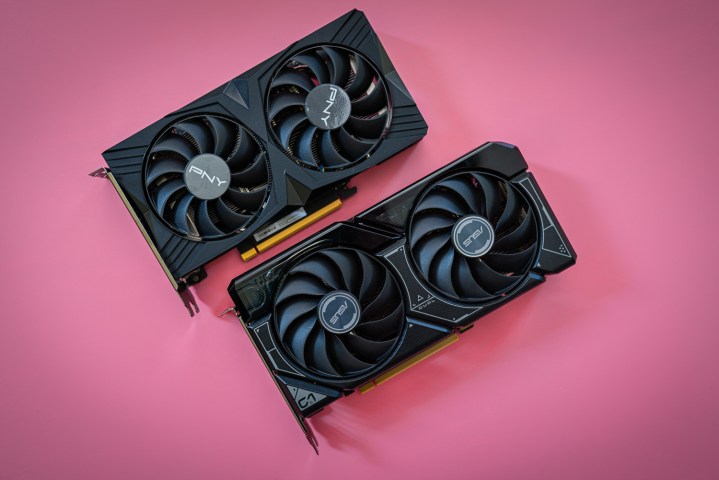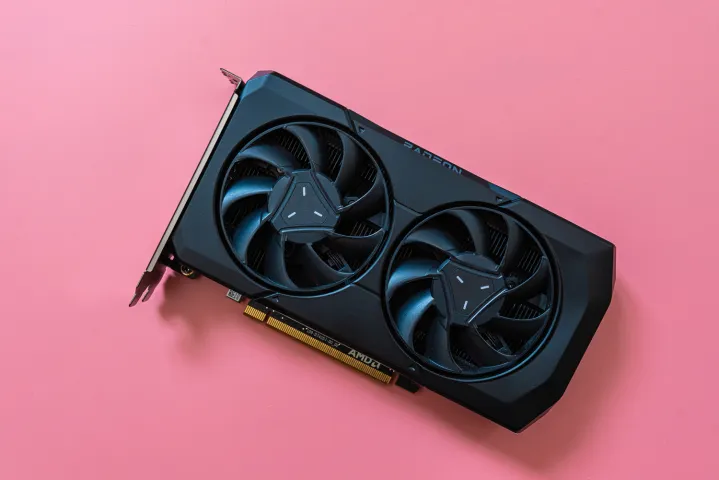There’s no doubt that that Intel’s new Arc B580 is one of the best graphics cards you can buy. Clocking in at just $250, it’s a powerhouse GPU that delivers performance we normally only see out of GPUs north of $300. As you can read in my Intel Arc B580 review, it’s a fantastic option at 1080p and it scales up surprisingly well to 1440p. There’s just one problem — the Arc B580 is sold out everywhere.
Intel clearly didn’t anticipate the demand, but you don’t have to succumb to scalpers or patiently wait while the Arc B580 comes back in stock. There are some excellent alternatives available around the same price that you can pick up right now.
Intel Arc B570

The most obvious alternative to the Arc B580 is the Arc B570. It’s a slightly cut-down version of Intel’s $250 CPU, featuring a slight reduction in core count, clock speed, and memory for a lower price of $220. There aren’t a lot of GPUs available around that price, and as you can read in my Intel Arc B570 review, the GPU is surprisingly capable considering how inexpensive it is.
It goes toe-to-toe with Nvidia’s RTX 4060 in a lot of titles, which is shocking considering you can pick up the Arc B570 for $80 less. It’s even powerful enough to handle ray tracing in games, particularly those without full-on path tracing. In Returnal at 1080p, for example, the Arc B570 managed 70 frames per second (fps) on average, and that was with maxed-out ray tracing settings and no assistance from upscaling. That’s mighty impressive for a $220 graphics card.
Although the Arc B570 is impressive, you’re still making a compromise compared to the Arc B580. Whereas the more expensive card can gracefully scale up to 1440p, the Arc B570 is mostly locked to 1080p. And even at that resolution, you’ll have to turn down some settings and resort to upscaling in prestige AAA games like Indiana Jones and the Great Circle, Alan Wake 2, and Black Myth: Wukong. Those compromises aren’t as common on the Arc B580.
What the Arc B570 nails is the mainstream gaming experience. It can handle Cyberpunk 2077, Marvel Rivals, or Path of Exile 2 without breaking a sweat, delivering frame rates above 60 fps with maxed-out settings at 1080p. You might need to compromise for those cutting-edge gaming experiences, but for the vast majority of games, the Arc B570 is a workhorse.
Nvidia RTX 4060

Although I wasn’t totally positive in my RTX 4060 review, there’s no doubt that Nvidia’s $300 current-gen offering is a popular graphics card. And for good reason. It’s the least expensive option out of Nvidia’s current-gen lineup, and despite some issues with its 8GB frame buffer, it still delivers solid performance. It’s not as fast as the Arc B580, mind you, but the RTX 4060 has a few tricks up its sleeve that Intel’s GPU lacks.
The biggest is DLSS 3. The RTX 4060 not only supports Nvidia’s excellent AI-assisted upscaling, it also supports DLSS Frame Generation. Intel offers frame generation through XeSS 2, but it’s only available in a single game at the time of writing. Meanwhile, DLSS 3 is available in over 150 games, while DLSS Super Resolution is available in over 500 games. The RTX 4060 may not be as powerful as the Arc B580, but DLSS 3 more than makes up the gap, particularly in demanding titles like Alan Wake 2.
DLSS 3 is really the selling point of the RTX 4060. Although AMD can’t quite match Nvidia’s ray tracing prowess, Intel can, taking away a key selling point for Team Green GPUs over the last several years. DLSS 3 is what makes the difference for the RTX 4060, enabling quality settings that otherwise wouldn’t be possible on this class of graphics card.
In more mainstream games, where you’re unlikely to turn on DLSS 3, the RTX 4060 is just fine. It trades blows with the Arc B570 and AMD’s RX 7600, only occasionally coming out on top. Thankfully, even lighter games like Marvel Rivals have arrived with DLSS 3 on day-one, so you can still get a performance bump.
AMD RX 7600

Speaking of the RTX 4060’s main competition, AMD’s RX 7600 is a compelling option against the Arc B580. Clocking in at $250, it’s the only current-gen option you can find around the same price as Intel’s latest GPU. There’s a reason this one is third, however. The RX 7600 is an impressive graphics card considering its price, but it’s not quite the slam-dunk recommendation that the Arc B580 is.
For raw performance, the RX 7600 slightly outclasses the RTX 4060, though it falls short of Intel’s latest offering. Like the RTX 4060, it also is limited to 8GB of VRAM, though that shouldn’t pose a significant issue in most games at 1080p, short of titles like Indiana Jones and the Great Circle. That’s largely due to the Infinity Cache available on the RX 7600, which gives the GPU a small amount of L3 cache to improve the effective bandwidth of the memory interface — a feature that the RTX 4060 also has but Intel’s latest GPUs lack.
The RX 7600 doesn’t rank third due to its raw performance — it ranks third due to a lack of DLSS 3. AMD has massively improved its FSR 3 upscaling and frame generation, and it’s supported in around 75 games now. Still, Nvidia holds an edge with game support. In addition, the RX 7600 struggles with ray tracing much more than the RTX 4060 and Arc B580, so FSR 3 can’t always make up the performance gap in prestige AAA games.
Let’s not throw the baby out with the bath water here, though. The RX 7600 is still a compelling option, just with some compromises in the most demanding games available today. It puts the pressure on the RTX 4060 for a lower price, and although the Arc B580 is a better option at $250 overall, the RX 7600 is still fantastic in a large number of games.




